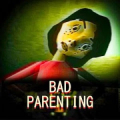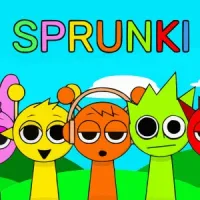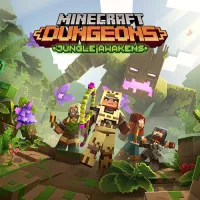
Bad Parenting
Bad Parenting
I recently embarked on an unusual journey with Bad Parenting 1: Mr. Red Face, a game that promises an unorthodox narrative and a humorously distorted slice of life. From the very start, I found myself immersed in a realm where misadventures and unconventional parenting challenges collide with creativity and unexpected twists. As I navigated through the initial screens and quirky instructions, I felt a mix of curiosity and anticipation about what lay ahead.
Unconventional Gameplay Mechanics
What captivated me immediately was how the game challenges the norms of typical parenting simulators. Instead of following a conventional storyline, I was tasked with making decisions designed to highlight the humorous paradoxes of being a less than perfect parent. The controls and interface are designed in such a way that every interaction feels like a mini-experiment in chaos. I found it fascinating how each choice, whether it was reacting to a tantrum or managing a quirky family crisis, was influenced by a blend of randomness and strategy.
The Unpredictable Narrative Journey
The narrative structure of Bad Parenting 1: Mr. Red Face is not linear. Rather than following a straightforward progression, the storyline is a web of interconnected scenarios that mirror the unpredictable nature of real-life family dynamics. As I ventured deeper into the game, I encountered chapters where my decisions led to surreal situations, blending absurd humor with poignant reflections on familial responsibilities. The story is rich with unexpected turns that kept me engaged and often forced me to rethink my approach to in-game challenges.
Humor and Wit in Daily Decisions
One of the standout aspects of my experience was the game’s humor. The moments of levity are carefully interwoven with more thoughtful dilemmas, creating a balance that is both entertaining and reflective. I found that even the most mundane decisions could escalate into comical disasters, a phenomenon that perfectly captures the chaos of everyday life with a mischievous twist. The developers have a unique knack for using absurdity to point out the quirks inherent in human behavior.
Engaging Visual Aesthetics
Visually, Mr. Red Face stands out with its distinctive art style that combines playful cartoonish elements with a touch of surrealism. The characters, especially the titular Mr. Red Face, are crafted with exaggerated features that intensify the humorous narrative. The animation is smooth, yet deliberately offbeat, enhancing the comedic impact of each scene. Every environment, from cluttered living rooms to bizarre landscapes, is meticulously designed to evoke a feeling of nostalgia mixed with an uncanny sense of modern discord.
Rich Audio Design and Soundtrack
The sound design played a critical role in my overall experience. The soundtrack is eclectic, blending quirky tunes with atmospheric scores that amplify the mood of each scene. Every sound effect, from the clamor of a frenzied household to an unexpected burst of laughter from an in-game character, was crafted to elevate the sense of immersion. I particularly enjoyed the way the audio cues helped me understand subtle narrative hints, nudging me towards alternative solutions during critical moments.
Character Dynamics and Development
Bad Parenting 1: Mr. Red Face offers a cast of characters that is both memorable and deeply flawed. As I interacted with various avatars representing different aspects of family life, I was struck by the depth of their personalities. While the game plays heavily on exaggeration and humor, it also reveals hidden layers of vulnerability and genuine affection. My journey with Mr. Red Face himself was particularly engaging, as his internal struggles and comically flawed decisions provided a window into the complexity of human emotions.
Challenging Decision-Making Systems
The decision-making process in this game is refreshingly multifaceted. At each juncture, I was presented with multiple pathways that ranged from the absurd to the surprisingly logical. The impact of my decisions altered the dynamics of each narrative branch. This interactive complexity required me to constantly weigh my options, often leading to unexpected consequences that made each playthrough feel personal and highly replayable. It was clear that every choice had its own set of repercussions, which kept me both on my toes and thoroughly entertained.
Innovative Use of Satire and Parody
The game excels in its use of satire, cleverly parodying societal expectations of parenting with a sharp and witty approach. I appreciated how the satirical elements were not merely for shock value but served to provide commentary on broader themes of responsibility, societal pressure, and the challenges of modern family dynamics. During my gameplay, I occasionally found myself laughing at the surreal exaggerations of daily struggles, but it also left me with moments of introspection about the sometimes unrealistic portrayal of family life in mainstream media.
Interactivity and Player Influence
One of the most compelling elements of Bad Parenting 1: Mr. Red Face is the deeply interactive nature of its gameplay. I felt that every decision I made could potentially alter the course of events in unforeseen ways. The game encourages exploration, not just of the visual landscapes but also of the moral ambiguities inherent in its narrative. The developers have cleverly instilled a sense of empowerment, as though I was rewriting the rules of conventional storytelling with every new choice I made. This level of control made me feel like an active participant in the unfolding chaos, rather than a mere spectator.
Unexpected Layers of Depth in Simplicity
Despite its seemingly simple premise, the game revealed layers of unexpected depth as I progressed. The initial impression of chaotic parenting soon evolved into a more nuanced exploration of personal responsibility and the fluidity of human behavior. I discovered that behind the humorous veneer lay intricate puzzles and strategic scenarios that required thought and reflection. It was a delicate balance between lighthearted amusement and engaging, sometimes profound, challenges.
Immersive World-Building and Detail
The world-building in Bad Parenting 1: Mr. Red Face is immersive and meticulously detailed. I found myself captivated by the tiny details that bring the game’s universe to life. From the quirky decorations in the household that suggested a rich, storied past to the subtle animations that hinted at off-screen events, every element contributed to a cohesive yet unpredictable experience. The interplay between environment and narrative helped me understand the underlying commentary on society, as each setting subtly echoed the themes of chaos and unexpected beauty in imperfection. The immersive design drew me into an experience that felt both surreal and intimately familiar.
Responsive and Adaptive Game Environment
Another aspect that stood out during my playthrough was the game’s responsive environment. Every action I took seemed to elicit a reaction from the world around me, creating a dynamic interplay between character actions and ambient changes. This feedback loop was not only satisfying on a tactical level but also added a profound sense of realism to an otherwise surreal narrative. Whether it was a shift in background music or a change in the caricatured expression of Mr. Red Face, these moments of environmental reactivity underscored how interconnected the game world truly is.
Layered and Intriguing Puzzle Design
Beyond its narrative and aesthetic ingenuity, the game offers an intriguing system of puzzles that are interwoven into the fabric of its storyline. I appreciated how these puzzles were not forced but rather emerged organically from the chaos of everyday misadventures. Each puzzle required me to think outside the box in order to navigate the convoluted challenges of parental duties. The puzzles served as both a source of humor and as a mechanism to deepen my personal involvement in the narrative, making the entire experience both intellectually stimulating and emotionally resonant.
Fresh Perspective on Routine Challenges
Throughout my time with Bad Parenting 1: Mr. Red Face, I experienced mundane tasks that were reimagined with a level of creativity and subversion rarely seen in traditional gaming. Simple activities such as managing a hectic schedule or addressing an unexpected household conflict were transformed into epic endeavors filled with unexpected twists. What originally seemed to be a straightforward simulation of familial chaos revealed itself to be a complex and engaging challenge that required strategic planning and adaptability, thus offering a fresh perspective on the trials of everyday life.
Exploring Emotional Nuances Through Gameplay
As I delved deeper into the game, I became increasingly aware of the subtle emotional undercurrents that shaped the narrative. The experience offered moments of lighthearted amusement interspersed with scenes that resonated on a more personal level. I found that as I navigated the myriad challenges, I was compelled to confront my own perceptions of responsibility and care. The game managed to strike a delicate balance between humor and genuine emotional depth, encouraging me to reflect on the often imperfect nature of human relationships while still entertaining me with its irreverent style.
- Unique humorous narrative that challenges traditional game mechanics
- Creative decision-based gameplay that offers multiple outcome branches
- Distinct visual style that blends surreal elements with cartoonish flair
- Engaging audio design that enhances the overall immersive experience
- Intricate character dynamics that expose both comedic and emotional depth
- Satirical commentary on everyday parenting challenges that stimulates reflection
- The unpredictable narrative branches may lead to occasional frustration
- Complex decision-making mechanics can require repeated trial and error
- Some puzzle elements might appear unintuitive for players new to the genre

















